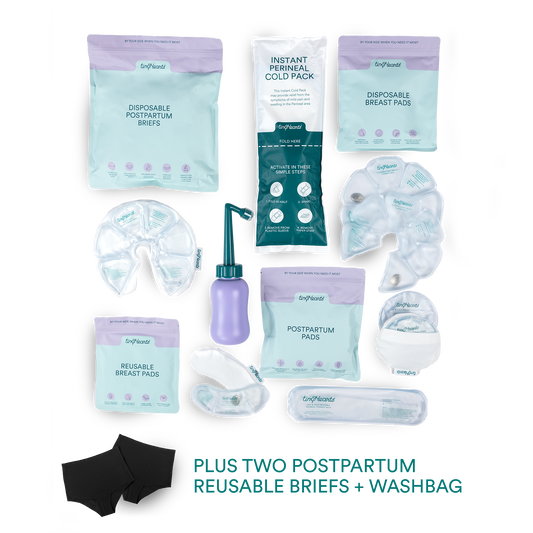I've often been asked as a paeds nurse, "What are the top gems of advice you could give a parent when it comes to a potentially unwell child?"
And there are two main things I respond with:
Firstly... it's YOU, mamas and papas, that are the experts on YOUR child. You know them better than anyone else: If your gut is telling you something's not right, I want you to follow that intuition and act right away!
The other is more specific. I want YOU to really know your little love's breathing, what is normal for them and what is not - because after all - if your little one's breathing is compromised, everything is!
So today I thought I'd talk all things Respiratory Assessment... and give you a little 101 on what is perhaps the most vital of your little person's vital signs. Saying this I promise I haven't forgotten their beating little hearts - but there's a good reason I emphasise knowing their breath as utmost importance. This is simply because children are not actually just mini adults - they are physiologically very different, And unlike adults, children are much more prone to a respiratory arrest than a cardiac one.
I thought I'd share some of the reasons for this below:
👉 Little one's airways are not yet fully developed and their rib cages are not yet fully formed.
👉 Bub's airways are much smaller than adults and are more readily affected by swelling.
👉 Our littlest loves will breathe exclusively through their nose for their first 6 months so if this becomes blocked respiratory distress will likely occur.
👉 Narrow airways mean much greater risk of airway obstruction from small foreign objects.
👉 Bubs heads are proportionately a lot bigger and their head flexed forward can occlude their airway.
👉 Upper airways are soft and more prone to collapse, and swollen tonsils can be obstructive.
👉 They have disproportionately little mouths yet big tongues!
and the list goes on...
Furthermore, research tells us that a child that does suffer a cardiac arrest has most commonly sustained this as a result of respiratory failure first. I know this sounds super scary but I want this fact to empower you with the knowledge that recognising respiratory issues early on will be ABSOLUTELY LIFE-SAVING.
This is also the reason why when we do CPR on little people we always give them rescue breaths first, as opposed to adults where we jump straight into compressions.
So Respiratory Assessment... Let's dive in 👇
After reading what I'll share with you below I hope you'll feel even a little more confident knowing what it is you're looking at and how and when to react.
Before you can recognise what's abnormal for your little one you need to know their normal. This is why here at Tiny Hearts we encourage you to have on hand a video of bub's bare chest, neck and face when they're healthy and breathing normally. This way you've got something to compare to if you're concerned there's been a change.
I challenge you to get that video today!
It makes sense that we get back to basics and start with the A in DRSABCD. In all of our courses you will learn that assessing a little person's airway is up there with your first few moves.
So how do we do this?
- Is bubs airway what we call patent? Open and free of obstruction?
- Is bub's breathing noisy? I'll talk more about this later.
- Is there any neck swelling or bruising?
- Is there a foreign body present? ie has bub choked?
- How hard or fast is your little one working to breathe?
After getting a quick overall picture the first thing we look at is bub's respiratory rate... this is how often they breathe in and out. We can assess this by resting a hand gently below their rib cage and counting each time their belly rises.
It's important to know that from birth a person's respiratory rate will gradually decline with age. A normal respiratory rate for a bubba born at term is roughly between 25-60 breaths a minute, which slows to 20-45 breaths a minute by one year of age and by 4 years it's around 17-30. An adult's respiratory rate in comparison is between 12 and 20 breaths a minute. Having a rough idea of how often your little love breathes in any given minute will help you identify when this changes.
Let's talk Effort
When you look at your little one breathing how much effort is involved?
Do they appear restful and breathing with ease or are they working hard to get the air in?
In the world of paeds nursing when it comes to assessing a bub's effort and work of breathing one of the main things we're looking out for is what we call "recession".
Recession refers to the external appearance of the lungs sucking air in, which is noticeable on a bub's body. When assessing your little one it's important to strip them down to their nappy or undies and have a good look at their chest. In an unwell child this 'sucking in' or recession can be observed under bub's ribcage, as well as between the ribs themselves and around the collarbone and throat. These 'recessions', or retractions as they're sometimes called, will indicate that your little one is working harder to breathe. They need medical help before they deteriorate further.
Generally, a bub's increased work of breathing will start lower down near their belly and as it worsens become more obvious closer to their mouth and nose. What this means is that sucking in around the throat, also known as a 'tracheal tug', is a more severe sign than recession you observe below the rib cage. If you are seeing a tracheal tug I want you to get help for your little one fast. Call 000 right away.
The other component of 'work of breathe' is the muscles your little one is using to breathe. When breathing becomes tiring the body recruits extra muscles to help with the all-important task of getting air into those lil lungs. We call this accessory muscle use and this can be seen in different areas. You may notice a bub's tummy muscles moving in and out quickly, or their little bod may have gotten their shoulder muscles on board to help with the work. If these extra muscles are working hard your little one is in respiratory distress. Once again, generally, the most severe work of breathing is observed affecting the areas close to their nose and mouth, hence a bubba whose head is bobbing up and down or has nostrils that are flaring open needs help ASAP. These are later signs of respiratory distress and need you to call an ambulance.
The next thing I want you to think about is Respiratory Noises... As your little one breathes in and out take notice of what you hear. The following sounds are relevant to a bub's breathing and may tell us a little more about what's going on. But remember, it's not a mama or papa's goal to make a diagnosis but rather identify when their little one is unwell or their condition is deteriorating.
Wheeze: this is a tight, whistling or musical sound heard with each breath that indicates air passages are becoming smaller, making it harder to breathe. Parents of kids with asthma will know this sound well.
Stridor: A high pitched sound heard in the upper airway as your little one breathes in. This is commonly heard in kiddies with croup.
Grunt: Grunting is the body's way of trying to keep air in the lungs so they will stay open. It is heard as a bub breathes out and is a serious sign of how how hard a little one is working to breathe.
Cough: We all know what a cough sounds like but I want you to think about the characteristics of what you hear. Does it sound wet and phlegmy? Is it harsh and dry? Does it sound more like a seal? Or are you hearing the horrific whooping sound?
You don't have to be an expert in describing these sounds but it can help medical staff or the ambo crew over the phone if you can at least tell them what you're hearing.
Colour
Another top sign that something is up with your little one's breathing is their colour. A pale bub, or one with a bluish or grey tinge to their skin is not getting enough oxygen to their lungs. We never want to see a blue baby! If you notice a blue tinge around your little one's mouth, inside their lips or on their fingertips this is a telltale sign their oxygen levels are low and your little one needs an ambulance.
Conscious state is also important. One of the first things our brains do when they're lacking oxygen is exhibit differences in our behaviour and the level of our alertness. This could be your little one simply being extra drowsy or they may have become confused or act strangely. You know your little one best so ask yourself if their behaviour is different to their norm....
What else is happening?
Like any medical concern it's necessary to get a good overall picture of what's going on. Think about the other systems at work in your little one's body and see if they're up to speed.
We know that fever is associated with an increase in bub's heart rate and their breathing. As part of your overall assessment, it's a good idea to check bub's temp as this may tell you if an infection is at play.
I also want you to think about what we call their intake and output. A bub who is using all their energy to breathe will not be interested in eating or drinking. Take note of their hydration status by sussing out how many wet nappies or trips to the toilet they're making.
Remember, knowing how to assess your little love means you can identify breathing issues before it's too late. Getting medical help early is key!
I hope this blog was helpful and leaves you a little more empowered to understand what you're looking at and the need to get help if you're concerned about your bub experiencing difficulties with their breathing.
If this helped you even just a little bit we'd love you to share this with your parent tribe and spread the word on respiratory 101!
Sign up for our Tiny Hearts First Aid Course for even more lifesaving knowledge and to see a respiratory assessment play out in practice!








